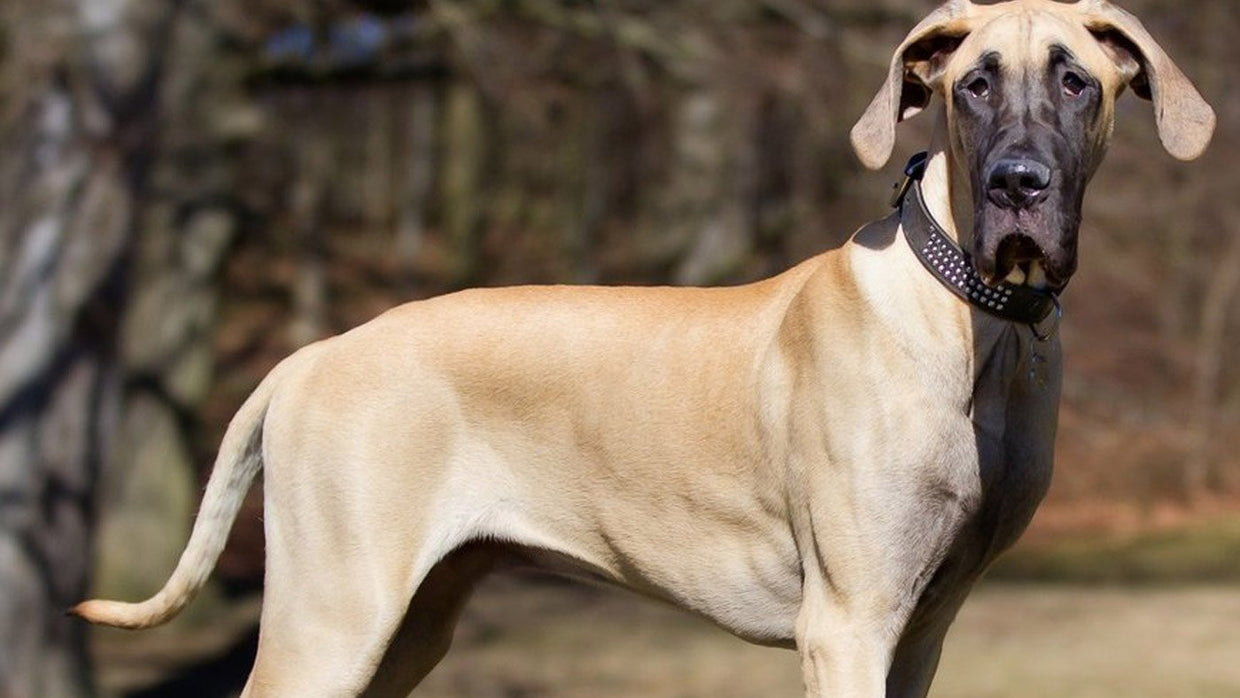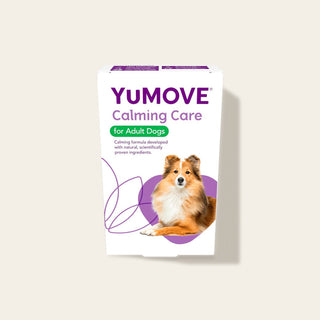

Signs of stress in dogs
Did you know that stress and anxiety in dogs are common? Or that stress can even indirectly affect your dog’s coat? Whether it’s fireworks or postmen, kites, rival canines, or even hot air balloons, something’s likely to agitate your fluffy friend from time to time.
Here’s what you need to know about canine anxiety, how to spot the signs of stress in dogs, and more.
Common kinds of stress in dogs
Just like in humans, not all causes of stress and fear for our dogs are the same. There are different kinds of stress your dog may experience, for example:
An instinctive fear response – another dog lunges, barks, and growls at your dog. They instinctively find the situation scary, and it causes them stress.
A learned fear response – your dog has experienced a traumatic event in the past, and now becomes stressed in environments and situations that remind them of the event.
A phobia – this is where your dog develops a long-lasting, extreme fear of something very specific. This fear can be seemingly random – such as a fear of balloons, or men with hats – or it can be a learned fear response that has escalated after repeated exposure to stressful situations.
Age-related anxiety in older dogs – as our best friends get older, they can become more timid and anxious. Some older dogs also develop memory issues, which can further agitate them. If your elderly dog becomes anxious, fearful, or forgetful and confused, make an appointment with your vet immediately.

What are the signs of an anxious dog?
The obvious signs of anxiety in dogs.
There are some obvious signs of anxiety in dogs, which many of us will be familiar with already.
These include things like:
- Tucking their tail between their legs
- Shaking
- Crying
- Whining
- Trembling
- Backing away
- Turning away
- Hiding
- Running
Some fearful or anxious dogs will become clingier and cuddlier, while others will seem restless and will find it hard to settle.
More subtle signs of anxiety in dogs
Sometimes, dogs express their anxiety in less obvious ways – even via behaviours that appear normal.
But if you spot your dog repeating a particular behaviour every time they’re in a stressful situation, or when they come into contact with a specific person or location, that could be a stress-related coping mechanism known as a ‘displacement behaviour’. These behaviours can be a result of your dog trying to cope with a situation when they’re not sure what to do.
Examples of potential displacement behaviours could include yawning, sniffing the ground, licking their paws, or shaking themselves as if they’re wet.

The surprising signs of anxiety in dogs
Think you’ve got a ‘naughty dog’? There’s a chance that they’re actually agitated, misunderstood, and even fearful.
Some behaviours common in anxious dogs are traditionally viewed as ‘bad behaviour,’ including barking a lot, being destructive, growling, biting, or toileting where they shouldn’t.
If your dog exhibits any of these behaviours, contact your vet. They can help you understand the cause of your dog’s acting out and can help suggest remedies.
So now you know some of the things to watch out for, when might you need to be vigilant? Let’s take a closer look at the common triggers of anxiety in dogs:
Strangers (canine and human)
Some dogs find other dogs – at home, or out and about – stressful. This can be down to a lack of socialisation when they were a puppy, or a result of past bad experiences. Strange humans are another common anxiety trigger, and ‘strange’ in this context can mean anything from the postman, to passers-by, or even an old friend who’s changed up their style.
Being left alone
The bond between dogs and their favourite humans can be very strong, and many dogs experience anxiety when left alone at home, or at a kennel. Consult with your vet if your dog displays signs of separation anxiety – they can help recommend treatment and may refer you to a canine behaviourist.
Transport, movement, and vehicles
When you stop to think about it, it’s not surprising that our dogs can find travelling a bit scary. After all, from their perspective, getting in a car may seem a lot like jumping into a metal box to move around really quickly!
Travel-based fears and anxieties often start with motion sickness, or a lack of adequate habituation as a pup, but can follow bad experiences, too. As well as cars and public transport, other common motion-related sources of anxiety include humans moving in unusual or unexpected ways – such as people running, cycling, or skateboarding.
Newness
Though many dogs are naturally outgoing and curious, some find things that are new and different scary. In practice, this might mean they get spooked by the terrifying bunting that’s invaded the street, an evil new sign outside a shop, or even holidays where they’re encountering situations or places they haven’t experienced before.
Children and new family members
Unfortunately, our best friends don’t always welcome new arrivals – and that might include a new baby, or a new pet! Unfamiliar older children can be scary too, as they are less predictable than adults, and tend to move more quickly and make more noise.
Loud noises
Many dogs aren’t keen on loud noises, whether from fireworks, a vacuum cleaner, sirens, bird scarers, or even loud music!
Vets and grooming
As we mentioned earlier, dogs can pick up new fears through unpleasant experiences. So, even if you’ve socialised and habituated your pup very carefully, a ‘nasty’ trip to the vet or groomer can change their perception. It is possible to work on replacing those bad associations with more positive ones, though.

How can you help your anxious dog?
Our dogs – and their fears – are all unique and individual, so there’s no one-size-fits all fix. Fortunately, though, there are a wide range of ways to work with your dog to overcome their fears and anxieties. Techniques called desensitisation and counter-conditioning can be used as part of a therapy plan if something has already become scary – but it’s important to talk to the experts before beginning this kind of work. As always, speaking to your vet should be your first port of call. Alternatively, try calming supplements for dogs.
If in doubt, talk to your vet
Once you’ve recognised that something’s worrying your dog, you should visit your vet so they can assess the situation and provide further advice. Your vet may recommend some form of treatment for your dog, or they may suggest a training approach, or potentially that you work with an animal behaviourist. Some signs of illness can look like fear or nervousness – so your vet can check for these too.
Finding the right behaviourist
When it comes to helping fearful or anxious dogs, working with a fully certified behaviourist is often one of the best approaches. Always check to see that the behaviourist in question is registered and certified, for example with the ASAB Certified Clinical Animal Behaviourists (CCABs) – this guarantees that your expert really is an expert and is up to date with the latest information and techniques.
Out-of-date advice may be counterproductive, and could have a negative effect on your dog’s behaviour and wellbeing. That's why it’s important to be careful, and to do your homework when you’re seeking behavioural advice.
Got a stressed or anxious dog on your hands? In addition to consulting with your vet, consider trying YuMOVE Calming Care for Dogs, to help reduce stress, support calm behaviour, and ease anxiety.




